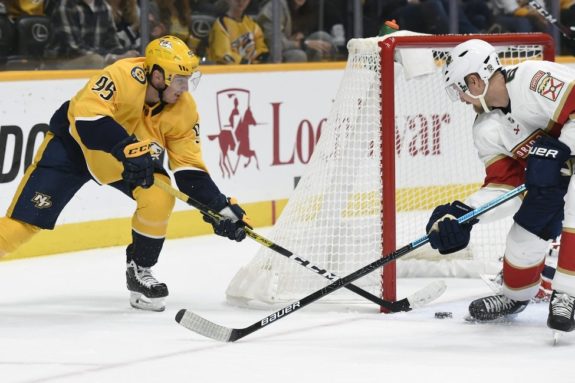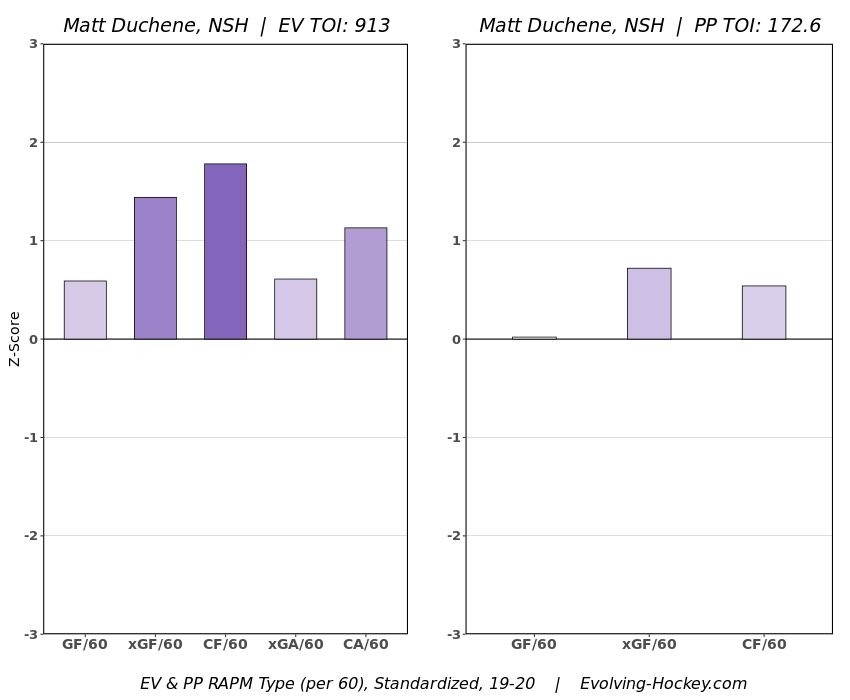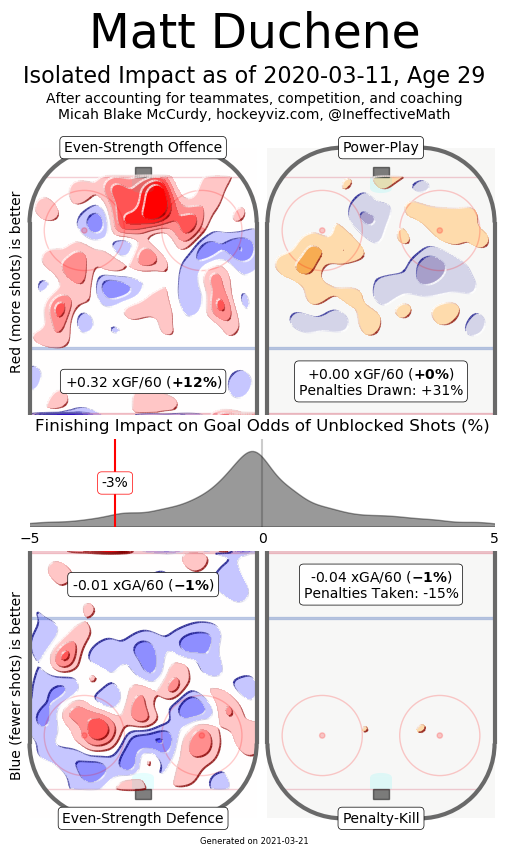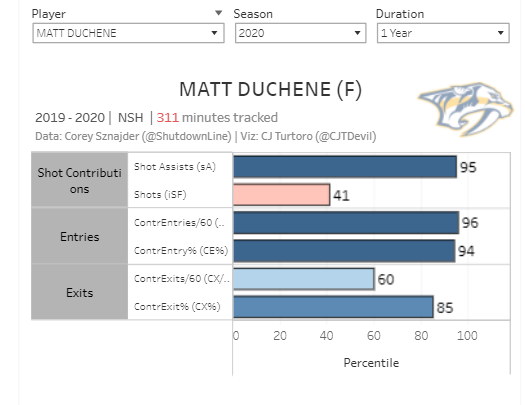After a disappointing first-round exit to the Dallas Stars in the 2019 Stanley Cup playoffs, the Nashville Predators needed a boost in offensive firepower. Their forwards produced a measly nine goals in six games, with Rocco Grimaldi accounting for a third of them. Players like Filip Forsberg and Craig Smith were held off the scoresheet, for the most part, notching an abysmal three points combined, which consisted of two goals, including an overtime winner from Smith. Viktor Arvidsson was nowhere to be found on the scoresheet and was invisible for a large portion of the series. Pekka Rinne’s outstanding performances were the only reason the team made it to double overtime in game six, let alone that far in the series.

Enter Matt Duchene, who was over in the Eastern Conference with the Columbus Blue Jackets sweeping the Tampa Bay Lightning at the time. He was linked to Nashville on trade deadline day, but nothing came of the rumors. However, it wouldn’t be long until Duchene ended up in the gold and navy. On July 1, 2019, Chris Johnston broke the news that he would be signing with the Predators. Both the fanbase and Nashville general manager David Poile were ecstatic to get their white whale. Fast forward almost an entire season, a pandemic, a playoff bubble, and 51 games later, and those feelings of joy are nowhere to be found among the majority. Anytime he is mentioned, the majority of Predators fans will criticize his play since joining the team. The most common responses consist of “overrated,” “overpaid,” “not very good,” “useless,” and much more.
All of this distaste for him got me thinking. His point totals have not been where both Duchene himself and the fans want them to be, but has he been as bad as the fans make him out to be?
The Eye Test Analysis
Duchene is a high-octane, speed-oriented player. He uses his quickness and stickhandling to create rush chances and open up opportunities for his teammates. Many of his goals come directly from strong forechecking, which he wasn’t able to get playing with the likes of Kyle Turris and Rocco Grimaldi for a part of the 2019-20 season. When Duchene gets possession of the puck, he doesn’t give it up easily. He thrives off zone exits and entries with possession but occasionally dumps the puck in and uses his speed to retain it. His go-to spot in the offensive zone is normally the lower bumper position both on the powerplay and at even strength. Furthermore, he’s an invaluable net-front presence due to his silky hands and excellent hand-eye coordination. He’s fantastic on the boards, which helps him work the puck to open teammates in tight areas.

Even when he isn’t scoring goals, Duchene is continuously creating chances. He has almost unmatchable edgework and utilizes that skill through strong cutbacks to make his route more deceptive to the defensive players. He also loves to use his edges to open up passing lanes or areas to stickhandle. He finds open space through quickness and deception, which is a handy tool that often goes unnoticed. Notice here how he takes the puck from Erik Haula at the right point, proceeds to explode out of the turn, and takes advantage of a downed defender to feed the puck back to Haula for the goal.
The play above is just one of many examples where his speed is proven to be his biggest asset when it comes to generating chances for both himself and his linemates.
There is also this goal against the Florida Panthers on April 27. Duchene heads straight to the front of the net after penetrating the middle. Once Nick Cousins gets the puck on the boards and rims it around to continue the cycle, Duchene retrieves it behind the net. Immediately after doing so, he looks to the empty slot and finds a cutting Ryan Ellis, who pots his second goal of the game.
Duchene is very good at controlling the pace of play and changing his timing so as not to be predictable, but he is not absent of flaws. There are plenty of times when he goes full blast into the zone instead of slowing down and looking for options. That scenario almost always leads to a turnover and rush the other way from the opposition. He also tends to give the puck away in the neutral zone, which has resulted in multiple goals against. He makes a lot of the little plays well and can think the game at a high level, but the mistakes are much more drastic and noticeable to a casual fan.
The Box Score, Analytics, and Microstat Analysis
Here is where the problems start to make themselves apparent. For the most part, Duchene has been a solid scorer. Two-thirds of his seasons in the NHL have been 55-plus point years. The season he became an unrestricted free agent, he put up 70 points – 58 coming in 50 games with the Ottawa Senators and 12 coming in 23 with the Blue Jackets. Naturally, the expectations were high for him among the Predators faithful.
Predators fans haven’t seen a player hit 70 points since J.P Dumont and Jason Arnott hit the plateau in the 2007-08 season, both tallying 72 points in 80 and 79 games, respectively. He didn’t end up delivering on those expectations. In 66 games with the Predators in the 2019-20 season, he put up a paltry 13 goals and 29 assists for 42 points.
More of the same continued down the stretch and into this current season. Duchene potted a goal and an assist in the very brief four-game stint spent in the playoff bubble and cost the Predators a crucial goal by way of offsides. After that, it felt as if the entire city was on his back. He did nothing to help his case. The anti-Duchene club increased, and those giving him the benefit of the doubt decreased ten-fold. However, despite the less than ideal point totals, his underlying numbers suggested excellent performance.

In the 2019-20 season, Duchene performed very well after glossing over his analytics in Evolving-Hockey and HockeyViz. At 5v5, Duchene was second on the Predators in Corsi for percentage (CF%) and fourth in expected goals for percentage (xGF%). The only player ahead of him in CF% was Craig Smith, who plays the role of a volume shooter with not much finishing. In terms of xGF%, the only forwards in front of him were Smith and Nick Bonino. The third player, sandwiched between the two, was Ryan Ellis, who played only 49 games due to a dirty elbow by Corey Perry in the Winter Classic.
Additionally, when looking at the league, he placed 27th in CF% and 49th in xGF% out of all forwards (minimum of 800 5v5 minutes). The two stats suggest that the Predators were in control of the puck most of the time with Duchene on the ice. Duchene’s regularized adjusted plus-minus chart from the previous season shows us that he was a strong, defensively capable play driving forward, but one that didn’t contribute to as many goals as he probably should have.

His heat maps say the same things I noted in the eye test section; he gets to the front of the net, resulting in good expected goal (xGF) totals. He also was fairly reliable in the defensive zone, which has not been common over the course of his career. One thing that stands out in this particular visual is Duchene’s finishing impact, represented by the red line on the gray wave. At 3 percent below league average, he clearly wasn’t finishing on his chances. It is peculiar that he wasn’t scoring, especially considering where he was generating chances from on the ice. He went to the front of the net but wasn’t getting rewarded for it. One would think that the poor finishing from areas in tight would regress to the mean, but it never did, and it still hasn’t.

The final thing that stands out about Duchene’s results is how many penalties he draws. His ability to draw tripping penalties especially stands out because defenders couldn’t catch up to him. It was an aspect of his game that went under the radar last year. The visual shows Duchene had a plus-31 percent in penalties drawn which is bonkers. His penalty plus-minus is no slouch either. In the 2019-20 season, he was fifth among all players in penalty differential with 17, tied with Colorado Avalanche superstar Nathan MacKinnon.
Diving Even Deeper
Duchene is an interesting case, so I think it’s only fair to provide the most accurate analysis possible using whatever statistics are available to me. This includes using Corey Sznajder’s manually tracked micro stats. He provides plenty of options, so I’m going to be emphasizing a few categories.
First, we can look at his passing stats and see that Duchene took advantage of low-to-high pass opportunities. Now, keep in mind that Duchene’s primary spot in the Predators offensive zone system was along the goal line, so naturally, he will have higher numbers in that area. However, his high-danger passes per 60 minutes were just as good, placing fourth on the team with 1.928. He ranked only behind Viktor Arvidsson (2.28) and Filip Forsberg (1.969).
Next, if you aren’t convinced that he drove play well, we can look at his transition numbers. Duchene was far and away the best transition forward on the Predators last season, totaling a ridiculous 15.62 carries per 60. For reference, he was better than the likes of Elias Pettersson, and Auston Matthews, while being in the same realm as Leon Draisaitl and within shouting distance of transition monster Jack Hughes.

When looking specifically at possession exits, Duchene put up a remarkable 59 percent, good enough for third among Predators forwards only behind Viktor Arvidsson and Ryan Johansen. In terms of entries, he was the best Predators forward by a wide margin…again. He had a 73 percent carry-in percentage on the second-most attempts at 21.40, only behind Rocco Grimaldi (23.61).
Finally, to drive home the point, Duchene was in the 95th percentile in shot assists, which I and many other talent evaluators would consider elite. Overall, he was spectacular at driving the play and producing chances for his teammates through controlled exits and entries. The problem is he didn’t create them for himself, and he didn’t convert the opportunities that his teammates provided him.
Why Has Duchene Been Struggling on the Scoresheet and How Can It Be Fixed?
It would be moot to continue about how Duchene’s numbers have been excellent after looking past point totals. He has been providing boatloads of offense both in transition and in the offensive zone. However, the gripes against him come because he’s not producing points. Considering it’s the most primitive metric for showing a player’s offensive production, it’s no surprise that most fans are going to want a player on an $8 million contract to produce as much as he’s worth.
How can Duchene fix his problems, though? The answer is not as simple as changing up a part of his game. So far this season, Duchene has a worse finishing impact than he did last year at six percent below league average. He’s producing just as well analytically in the minimal time he has played – outside of a drop in defensive play, but the raw scoring is troublesome once again.

The first part of an answer to the question would be luck and regression. Duchene’s career average shooting percentage is 12.5. He’s currently shooting at half of that, and in the previous season, he was shooting at three-fourths of it. Some regression is due, especially considering where he is setting himself up to score from in the attacking zone. Predators fans shouldn’t expect him to be a 30-goal scorer, as the only two seasons he hit that mark, he was shooting at or above 15%. He also benefited from playing with superstars in his most recent 30-goal feat. Most players playing with Artemi Panarin in Columbus and Mark Stone in Ottawa will benefit everywhere.
Another thing that would benefit Duchene is increasing his ice time and playing with linemates that score frequently. Head coach John Hynes hasn’t been one to give a star player lots of ice time. Even Taylor Hall, in his MVP year, didn’t play over 20 minutes a night under Hynes, though it was close. Duchene, during his ridiculous year in Columbus and Ottawa, had an average ice time of 18:50. For a short time in Ottawa, where Duchene played arguably the best hockey of his career, he averaged a second over 19 minutes. In contrast, his Nashville ice time is the lowest of his career at 16:41, with the lowest ice time in a single season of his career being this year at 16:03. Put him with a guy like Eeli Tolvanen, who my colleague Kristy Flannery wrote about, and Forsberg, and we should see a breakout from him on the scoresheet. He’s had a tough time producing, but there are some changes that head coach Hynes could make to spark the fire.